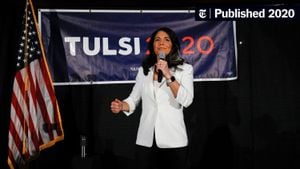WISCONSIN — The year 2024 has proven to be monumental for the state of Wisconsin, as it broke its previous record for the number of school referendums presented to voters. According to the latest report from the Wisconsin Policy Forum, voters faced 241 referendums, surpassing the previous record of 240 set back in 1998.
This year's referendums sought funding requests totaling $5.9 billion, another record-breaking figure, eclipsing the $3.3 billion asked for in 2022. Voters approved 169 of these requests, leading to nearly $4.4 billion allocated for schools, marking an impressive approval rate of 70.1%. While this rate indicates high voter support, it aligns with trends of declining passage rates seen since 2018, raising questions about future funding endeavors.
Even with the unprecedented number of referendums on the ballot, this year had the lowest approval passage rate during midterm or presidential elections since 2014. For comparison, the previous record for the number of favorable outcomes occurred back in 2018 when voters approved 140 visualizations.
The distribution of the around $4.4 billion earmarked for school districts reflects the efforts of educational administrators across Wisconsin. Notably, more than one-third of the state’s 421 school districts secured funding through referendums, amounting to 145 districts achieving at least one successful vote this year.
Among the successful initiatives was Madison Metropolitan School District, seeking the largest debt referendum approval of $507 million, along with additional operating funds of $100 million. Another significant funding initiative was Milwaukee Public Schools, which saw approval for its $252 million operating referendum—marked as the second-largest approval since records began being kept over three decades ago.
High support for funding often stems from larger school districts, where voters tend to be more favorable. This year, larger urban districts featured passage rates of about 90%, compared to 87.2% for suburban districts. Conversely, rural school districts saw significantly lower rates, reflecting a more complicated dynamic arising from local economic conditions.
Analysts from the Wisconsin Policy Forum highlighted inflation's role as the driving factor behind the increased funding requests as it outpaces state revenue limits—limits which restrict how much money school districts can receive. Consequently, many districts faced pressures due to rising costs amid tight labor markets for teachers and staff.
Over the past four years, 275 of Wisconsin’s school districts saw at least one referendum pass, underscoring the continuous need for funding and enhancement within the state’s educational framework. The passage rates vary significantly by season; this past fall for example, school referendum approvals were at a healthier rate of 77.5%, contrasted with the spring's 60.2%—further evidencing the higher turnout influencing the outcomes.
Overall, 2024's referendums cannot be viewed merely through numbers; they demonstrate growing awareness and concern for educational funding among taxpayers, showcasing their willingness to financially support schools. The heightened influx of requests may lead to important discussions surrounding solutions to address funding imbalances, especially as economic pressures on families and local taxpayers are felt statewide.
These challenges and victories paint the picture of Wisconsin's educational funding dynamics, echoing broader trends impacting schools nationally. It remains clear, the conversations around public support for financing, fiscal responsibility, and community involvement will continue to shape funding landscapes for years to come.



